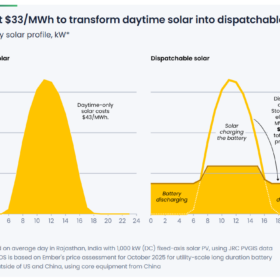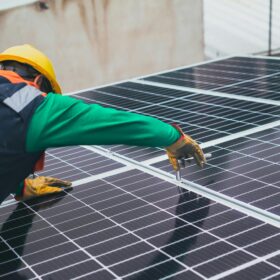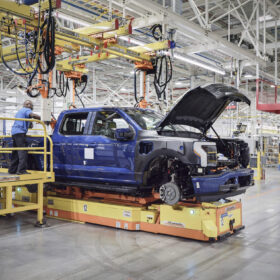Few risk categories in clean-energy financing of energy storage are as misunderstood as Foreign Entity of Concern (FEOC) compliance. The main concern is that Chinese sourced batteries and sub-components could trigger tax credits claw backs due to routine maintenance and warranty repairs after December 31, 2025.
This could affect every energy storage project that relies on Chinese technology. The rules, rooted in the Inflation Reduction Act (IRA) and broadened by subsequent Department of Energy (DOE) and Treasury guidance, reach deep into project economics, tax-credit eligibility, and ultimately asset value. For developers and investors holding batteries or integrated energy-storage portfolios, working with a non-FEOC compliance supplier can turn a performing energy storage asset into a stranded asset after January 1, 2026.
What FEOC Means in Practice
Under the IRA, facilities seeking credits under §§ 45X (advanced manufacturing), 45Y (tech-neutral production), or 48E (tech-neutral investment) must certify that no “foreign entity of concern” participates materially in their supply chain. A FEOC is any entity owned or controlled by, or subject to direction of, the governments of China, Russia, Iran, or North Korea.
For lithium-ion battery projects, this casts a long shadow. Cells, cathode materials, and even control-software components often trace back to Chinese or Chinese-owned intermediaries. If a system includes such components after Treasury’s enforcement dates (2024 for critical minerals, 2025 for battery components), the asset risks disqualification from the very tax incentives for the energy storage project financial model.
How FEOC Could Create Stranded Assets
Tax-Credit Loss or Recapture
Project models built on tax credit assumptions can collapse if the IRS later disallows credits. As Norton Rose Fulbright’s Project Finance News described, “tax-equity investors will demand claw-back protection, but recapture may still fall on the project company if the asset becomes non-compliant mid-term”. That scenario transforms a once-profitable energy-storage project into a stranded asset—still operating, but unfinanceable, and often unsellable.
Supply-Chain Obsolescence
Because the FEOC definition extends to “control through board representation, voting rights or contractual leverage,” future guidance could ensnare suppliers not presently black-listed. Developers procuring equipment today for delivery in 2026 and beyond must assume that compliance risk grows with time. A compliant project in 2025 may become non-compliant in 2028 if its replacement modules or warranty remediation source subcomponents from a restricted entity.
Contractual Exposure
Without express contractual remedies, developers and asset owners shoulder the full risk. If a supplier’s FEOC status changes post-delivery or the supplier is not FEOC compliant starting on January 1, 2026, then IRS may recapture credits due to spare parts or warranty claims associated with the battery. All parties to the transaction may find that representations and warranties were correct at contract execution, but have expired or are no longer legally compliant after COD.
Contractual Paths to Avoid Stranding
Supply-Chain Diligence and Representations
Every major energy storage project contract should consider the following options:
- FEOC representations and warranties that all components, sub-components, and controlling entities comply with 42 U.S.C. § 18741(a)(5).
- Indemnity clauses covering credit loss, yield reduction, or resale impairment from breach.
- Audit rights permitting owner inspection of supplier documentation and upstream certifications.
- Survival language extending the representations through the longer of (i) the tax-credit recapture period or (ii) asset life.
- Frontloading spare parts in the supply contract can help alleviate the long-term concerns for FEOC Compliance. Meaning, if the spare parts are delivered as part of the initial supply contract, then future FEOC changes and regulations can be avoided.
- Requiring that O&M work be completed by a FEOC compliant entity.
- Add Remediation options to the supply contract in case the government determines that purchasing spare parts will violate FEOC which would require the claw back of tax credits. This is a similar concept as in most IP indemnification language.
As Baker Tilly US notes, robust supply-chain documentation and contractual indemnities “are the only durable shield against tax-credit recapture once the project enters operation”.
Change-in-Law and Safe-Harbor Mechanisms
Projects can mitigate exposure by beginning construction or safe-harboring under prevailing rules, locking in eligibility even if later guidance tightens. Contracts should allocate change-in-law risk to the supplier, specifying that if a rule change renders a component non-compliant, the supplier bears replacement cost and schedule impact.
Financing and Insurance Structures
Tax-equity and debt documents increasingly require FEOC-compliance certificates and ongoing covenants to maintain eligibility. Some investors now demand reserve accounts or insurance riders to cover potential recapture.
Lifecycle and Residual-Value Modelling
In pro-formas, finance sponsors should model scenarios assuming partial or total credit loss:
- NPV/IRR sensitivity to credit removal.
- Repowering or replacement cost of non-compliant components.
- Secondary-market discounts for FEOC-tainted assets.
This approach quantifies stranding risk and enables lenders to set coverage ratios realistically.
Strategic Takeaways
- Treat FEOC compliance as mission-critical. FEOC compliance is not a procurement check-box, but a defining factor for asset eligibility for core incentives.
- Build in auditability. Maintain traceability from cathode powder to final rack.
- Draft defensively. Warranties, indemnities, change-in-law clauses, and survival periods should all extend beyond COD.
- Model the downside. Assume at least one component fails the FEOC test and plan supply train contingencies.
- Monitor policy. The DOE and Treasury continue to refine definitions; proactive legal review is cheaper than post-audit remediation.
With these structures, owners can preserve the value of storage and hybrid assets even as geopolitics reshape the supply chain. FEOC compliance, properly managed, becomes less a constraint than a competitive differentiator and proof to investors that the asset is both resilient and financeable.
Casey Butler is a Partner and Co-Lead of the Construction Group at Chicago based Lithin Kach LLP. He focuses mainly on EPC and supply chain transactions within renewable energy projects and has a deep knowledge of the energy storage market. He can be reached at casey@litwinkach.com.
The views and opinions expressed in this article are the author’s own, and do not necessarily reflect those held by pv magazine.
This content is protected by copyright and may not be reused. If you want to cooperate with us and would like to reuse some of our content, please contact: editors@pv-magazine.com.








EOS Energy is already producing modular, non-flammable, long duration BESS in Pittsburgh PA. Their aqueous zinc batteries are recyclable, use readily available US sourced materials, & have a deeper discharge cycle up to 12 hours, which is ideal for Community Solar parking lot microgrids that include on-site BESS +Vehicle-2-Grid chargers. Kaiser Healthcare is already using them for hospital BESS.